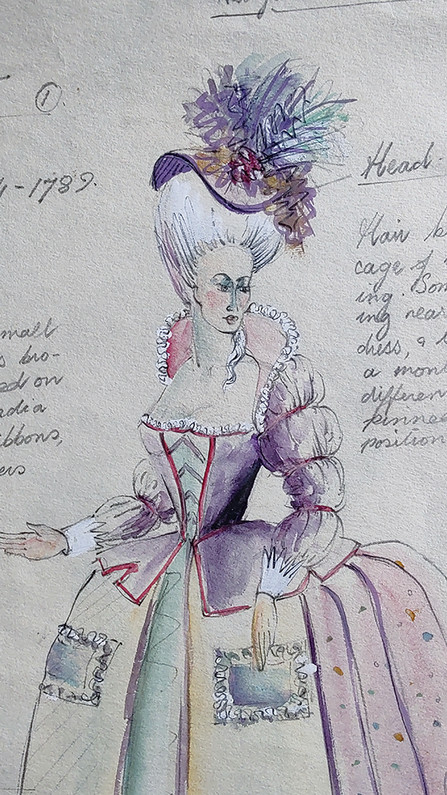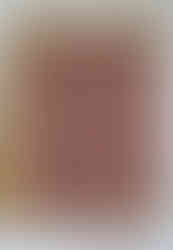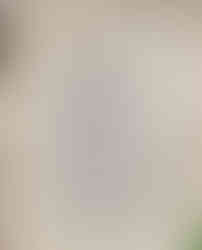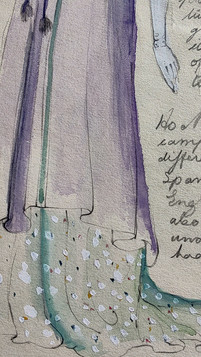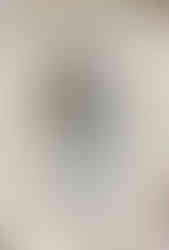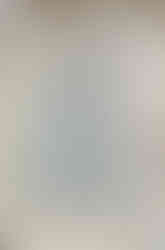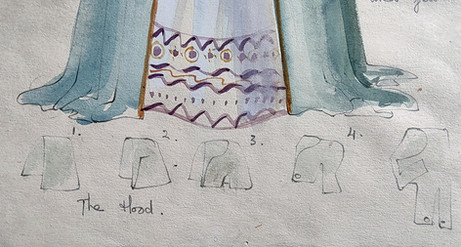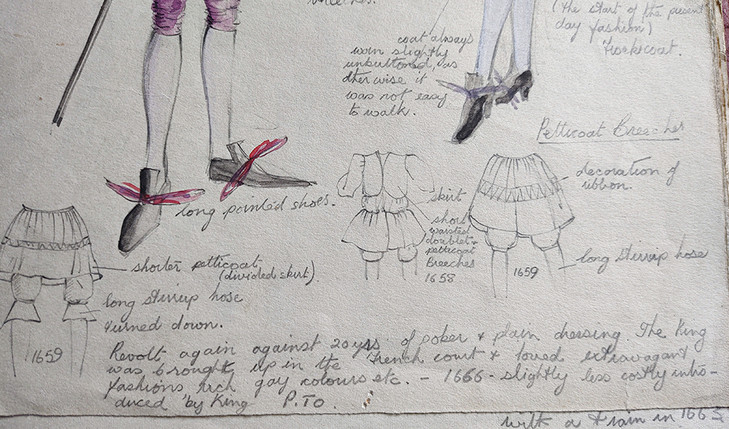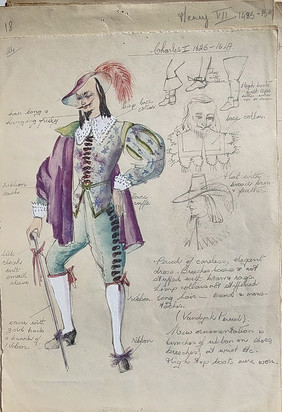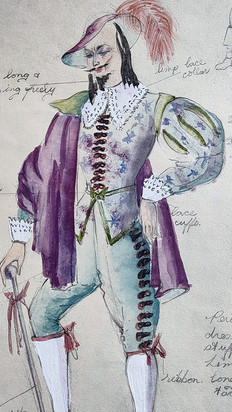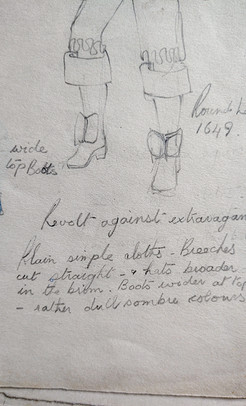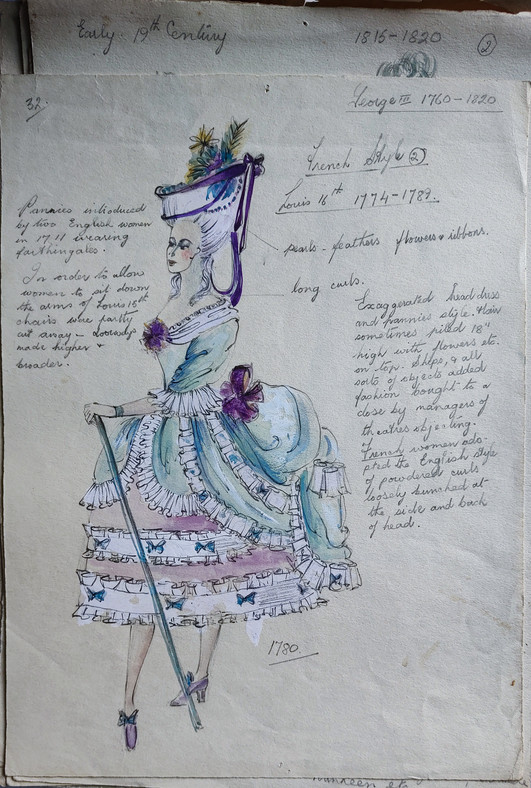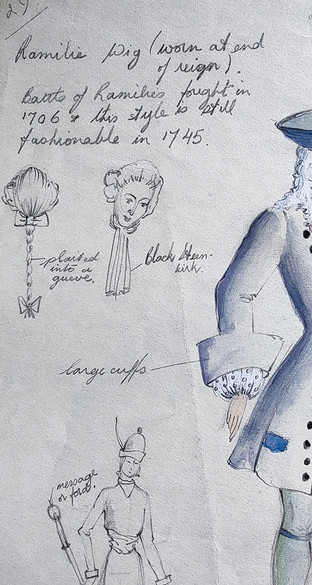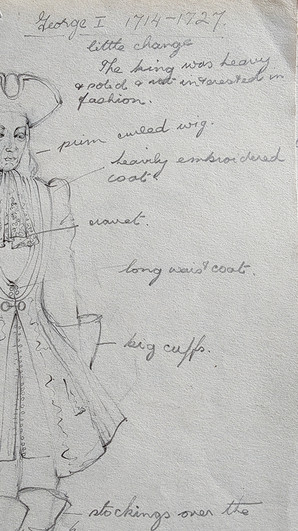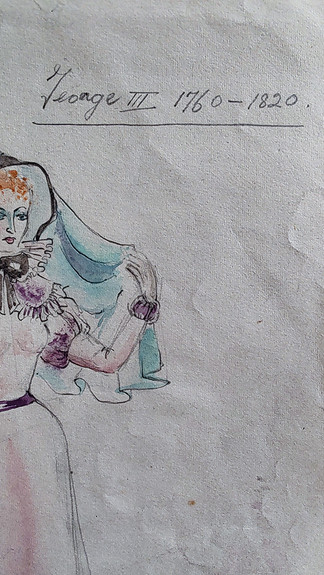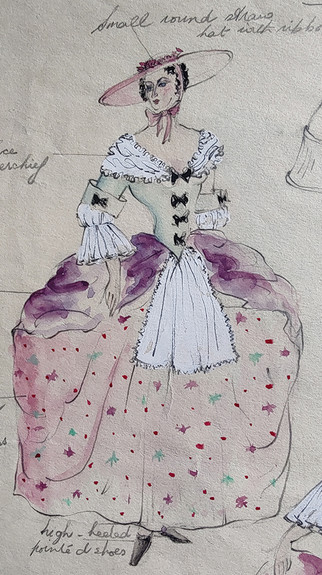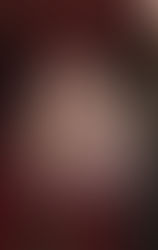Peggy
- Stephanie Smart
- Aug 1, 2023
- 5 min read
People are often surprised when I explain that I'm not trained as a fashion designer or a costumier. I've no understanding of how to work with patterns, and don't use them. I don't know how to design or construct a garment that anyone could actually wear. This is my confession!
My work with paper concerns the actual construction of the garments themselves and previous to that, I use paper in order to illustrate some of the designs, but usually only once a fairly well formed impression of the particular piece I wish to construct already exists in my head. And that is usually just so that I don't forget what I've come up with. I don't sketch out every piece by any means, and every design is likely to evolve during the making process.
Because it's not a regularly repeated process for me, sketching therefore tends to always present the same set of questions: i) should I show a head on the model I'm drawing, or not? The mannequins I present the finished pieces on are headless, and even designers designing for real men and women sometimes leave them off. ii) if I include a head then to what extent and in what style, illustrative, figurative, graphic, abstract? iii) ought I to draw in colour, on coloured paper, with long sweeping lines or short sketchy ones, using watercolour inks or coloured crayons? That sort of thing!
The fact of the matter is that I tend to draw garments in just the same way as I have always drawn anything else. Does this matter? I'm not convinced either way but I have always been interested in the idea of more surely developing my own style of fashion illustration.
Certainly illustrations by most of the top fashion designers (and those who are less well known) are quickly recognisable as their own. The garments they design are shown first of all flat on the outline of a figure. And that figure likely looks very similar to each of the other figures who have been drawn wearing each of the other pieces in their collection. A collection of sketches can be a collection of works of art in it's own right. Click here to link to a site that shows you a few examples. As I've said I am not a fashion designer per sae so I'm sure it doesn't matter as such but the idea interests me.
Some while back I went on a course run by fashion illustrator Bil Donovan who became artist-in-residence at Dior in 2009. It was a single evening in which he encouraged us to take a single line for a walk Thereby to draw the models we could see in front of us. Below you can see a few of my more or less successful attempts (drawing in a different way is always a challenge!):
But since then I have returned to drawing my historic garments on headless models in much the same way that I would draw anything else.

Recently I reconnected with my step uncle after not having seen him for a long while. We talked of my work and he told me that since she died he had uncovered a set of drawings done by my step grandmother, his mother, Peggy Wilson (previously Peggy Lee, nee Peggy Browne). I knew she had been a fashion model but had had no idea that she had gone to art college previous to that and when I received a paper portfolio with dozens of beautiful illustrations in it, in the post, I was amazed.
She had drawn example garments from the 1400's to the 1900's. Probably doing so in the 1940's when she was around 18-20 years old (she was born on 22nd December1923).

Unfortunately we know little about her life as an art student. It's possible that Ruskin Spear, one of the foremost British painters of that era was her teacher. Obviously she was interested in fashion before she began modelling. Where she was seeing the original garments she was illustrating we don't know. Probably these aren't her original designs, it looks more as if she were trying to document notable aspects of fashion as a record for herself. Thereby illustrating the major changes as they occurred across the centuries of fashion history. It's a useful record for me anyway. Of course my work is also built around more general aspects of social and national history. I seek to weave the stories of real individuals from the past into the garments I design. I nod toward the achievements, thoughts, feelings, aspirations, talents or simple ordinariness of specific individuals (living or dead) in the collections I make. So it seemed rather magical that here, in the orbit of my own family I should find a woman whose illustrations and style might at least help me build a blog post showing a unique set of fashion illustrations, and thereby explore a little further this singular preoccupation.
Having most recently created The Regency Wardrobe collection I wanted to start by showing you some of her drawings of fashion from that period (with a few sketches of the sort of original Graeco/Italiante garments that inspired fashion during the Regency era).
We then step back in time to the 1400's:
And the 1500's:
I have a few particular favourites such as this garment from the time of Charles II. I want to show you the detail:
Here we have an equally dapper gentleman from the time of Henry VII (who featured recently in my post about England's first paper maker John Tate )
These next illustrations show fashion from a period of particular interest to me currently (the 1700's) in terms of the research for my next collection Weaving Silk Stories, please see future posts for more information about that.
She obviously wanted to understand aspects of the construction of such garments also:
There are only a limited number of designs that come more up to-date (that is, up to-date for an artist in the 1940's). But also one or two that amuse me, such as this one of a helmet from a suit of armour (a helmet being not something I've attempted in paper, but never say never!)
Some of the primary details that remain known about my step grandmother (beside family memories) were collected together for her obituary:

I didn't know her well, she seemed immensely tall and elegant and proper to me, when I was a little girl; married as she was by then to my grandfather Jimmy Wilson (who had a small room attached to the sitting room with shelves all over the walls covered in bottles, this was the bar, he did like socialising!). That she might have shared my interest in historic fashion came as a great (as in, welcome) surprise. Wouldn't it be wonderful if we knew ahead of time what we would later wish we'd asked our relatives. If only I could have known to ask her all about these drawings and her time at art college, whilst we walked on this planet together, familial as we were. For me the work of working out how best to create illustrations of my garment designs continues but maybe I will integrate something of her practise into me own.










